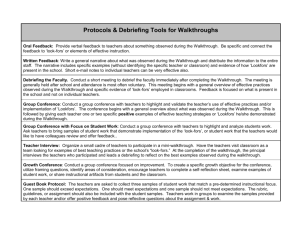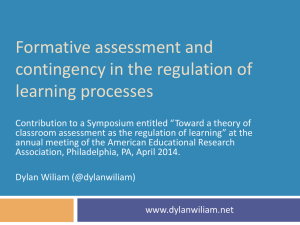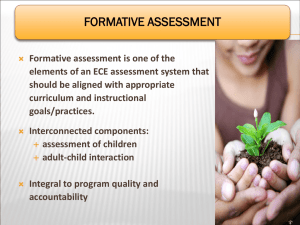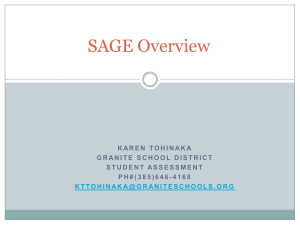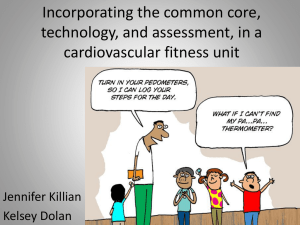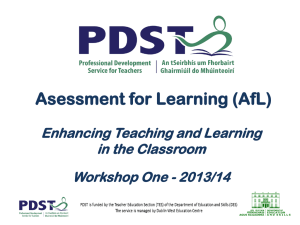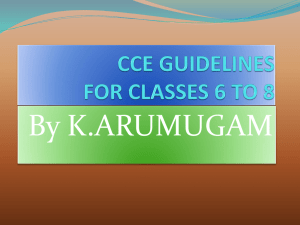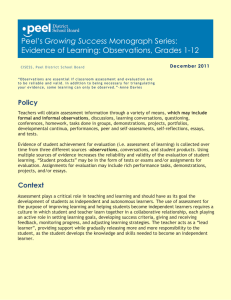Focused Observation *Look
advertisement
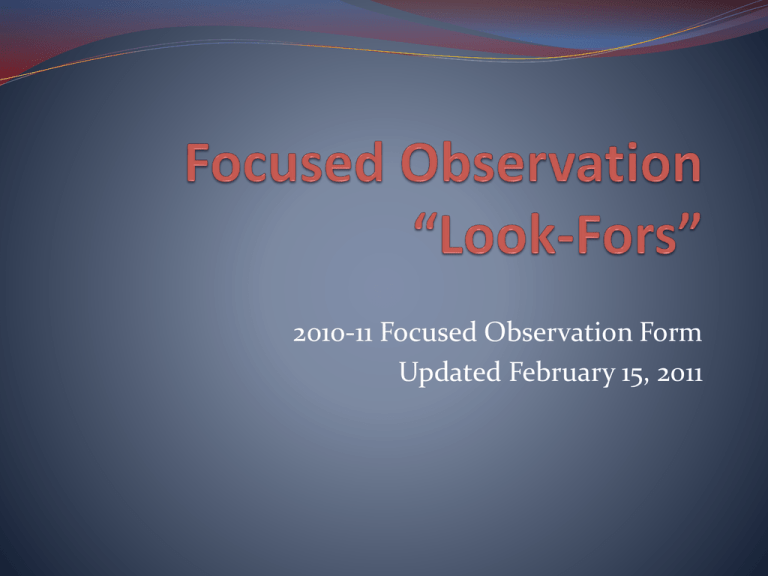
2010-11 Focused Observation Form Updated February 15, 2011 Look-Fors for Student Friendly, Standards-Based Objectives In the Classroom Student friendly language Written on board, power point slide, on assignment sheet, written in students notebook/journal Written out and linked to standard(s) Not a bulleted list of “Things to Do this Lesson” nor a list of pages to read or worksheets to complete. Objective is stated and revisited/restated during the lesson Developmentally appropriate for the students to easily understand the objective Simple Vocabulary, Pictures for Primary Grades Separate objectives for each class/subject Look-Fors for Student Friendly, Standards-Based Objectives Student Actions Students can articulate Teacher Actions Teacher feedback to students or groups what they are learning Making connections between and why past and present objectives Questioning and Teacher discussions between states/restates/rephrases students objective and links objective to Evident in student work activities Activities/written work reflect the posted objective Look-Fors for Student Friendly, Standards-Based Objective Room to add more “look- fors” Differentiated Instruction Differentiation is the adjustment of content, process, or product in order to meet the needs of students and promote learning (Tomlinson & McTighe, 2006). Research also indicates that differentiation may be the achieved through the establishment of a positive classroom climate (Tomlinson, 2003). Look-Fors for Differentiated Instruction Scaffolding – content, process interaction of product groups Leveled questioning Guided reading 1 2 3 4 Interest Centers Targeted games, projects and technology Tiered assignments Graphic organizers Foldables 1 2 Study Guides 1 2 Varied homework assignments Pre-assessment Chunking 1 2 3 Assignment/Project Instructions and Products Fluid/Flexible grouping practices Leveled readers Multi-modality: say it, write it, draw it, do it Use of Manipulatives Book circles D.I. Wiki – In-House D.I. Wiki – Out-of-District Look-Fors for Differentiated Instruction See Additional D.I. Support Document on Professional Development Intranet Site Room to add more “look- fors” Formative Assessment Assessment is formative where it is part of an on-going instructional process where teachers measure pupils’ knowledge and progress in order to inform teaching. It is often referred to as “assessment FOR learning.” Examples of formative assessment may include concept maps, questioning, journals, and monitoring students’ performance on homework, diagnostic tests and quizzes. http://www.sess.ie/faq/glossary-terminology-relates-assessment Look-Fors for Formative Assessment Quick checks target – key concept of lesson Exit tickets/slips Thumbs up-Thumbs down Multiple Choice ABCD Cards White Boards Electronic clickers T-charts Agree/disagree charts Sparkle Specific feedback Technology Look-Fors for Formative Assessment Five Fingers Student learning log 1 2 Stop light cards 1 2 Student questioning Pre-test Think/Pair/Share KWL Conferences Whip Around Written reflection 3-2-1 Skill cards Misconception Check Self assessment 1 2 3 4 Video taping Vocabulary Pictures Look-Fors for Formative Assessment Room to add more “look- fors” Focused Observation Look-Fors The Look-For list will be an evolving list that shares potential “Look-Fors” during all Focused Observations Current list was created and edited by teachers at various buildings, building and district administrators and teachers on the CPE Committee. The list will be updated at periodic times during the school year and will be a standing item on the CPE Committee meeting The “Look-For” list is not a finite list and is designed to grow and adjust as the year progress Next steps include providing exemplars and greater depth
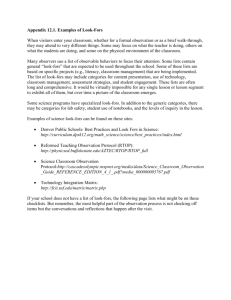
![FID Application Checklist[1]](http://s3.studylib.net/store/data/006756416_1-29b03ce29081ceb3d2d811cda22c5a0d-300x300.png)
